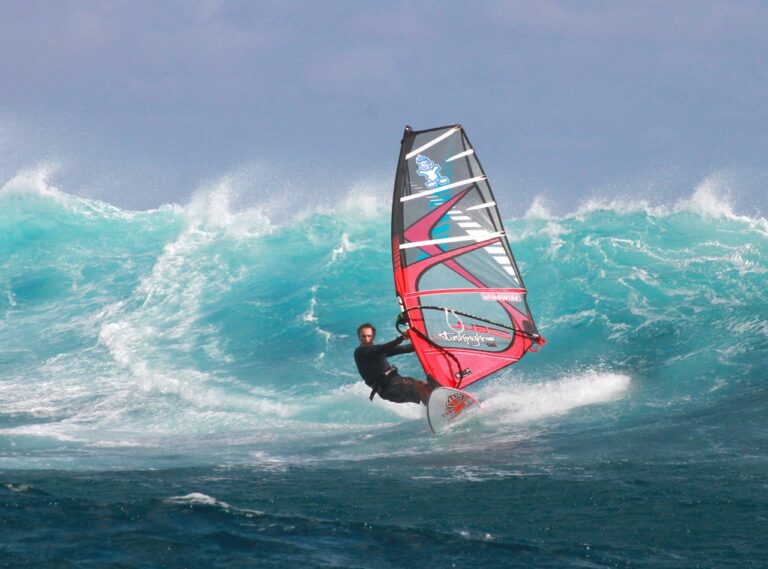Boards is joined once again by Chris ‘Muzza’ Murray for this second instalment on how to handle down-the-line wave riding. So if you’ve never attempted this windsurfing bliss or you are a little rusty then be sure to check out this whole series. This week it is all about surviving your first sessions, we check out some rules of the road as well as a couple of tips on what to do if the worst happens, in general these rules can be transferred to all wave sailing days but some of them become much more prominent when it is purely down-the-line riding.
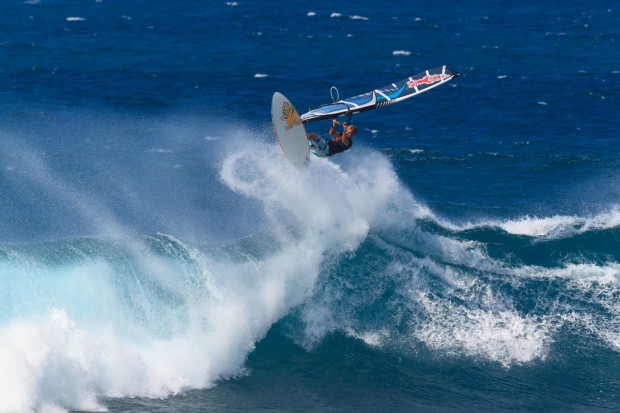
1. Heading out has right of way
So there is a rule that if your heading out, i.e. on the jumping tack, you have right of way over the person on the wave waiting to wave ride. This is because normally when you are on the wave you will be moving faster and you should be able to manoeuvre out the way of someone slogging out through the wave. On windy days, the person jumping still has the right of way because they may need to avoid a big close out section that they are heading towards and have no other choice then to go where you planned to smack the lip on that last close out section.
2. You get the wave first, it’s yours
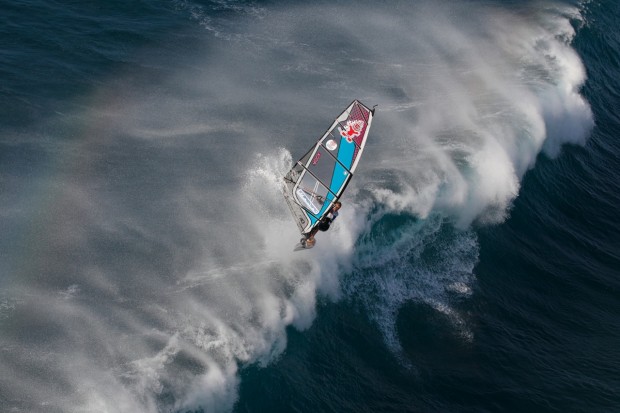
If you are on the swell first from far out the back then that is your wave, every one has to leave it to you and must leave you the space to ride that wave. If there are two people turning onto the same wave at the same time the person more up wind has right of way.
3. What if you find yourself sharing a wave?
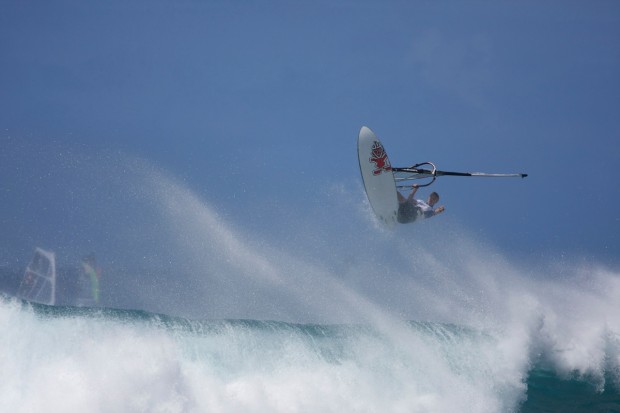
If you are sharing a wave and you are both happy with it then the person closest to the peak has the right of way to turn first.
4. Be aware of hazards

Before you head on to the water make sure you look out for rip tides and rocks and any other hazards. Some times rip tides can be helpful to getting out through large waves but you really want to avoid them when you are swimming around without your kit. You can normally see them as the water and waves around them don’t break in quite the same place or sometimes the waves don’t even break at all. It can often be a shallow sloping section on a wave where the rip is pulling out the hardest and water tends to be very choppy.
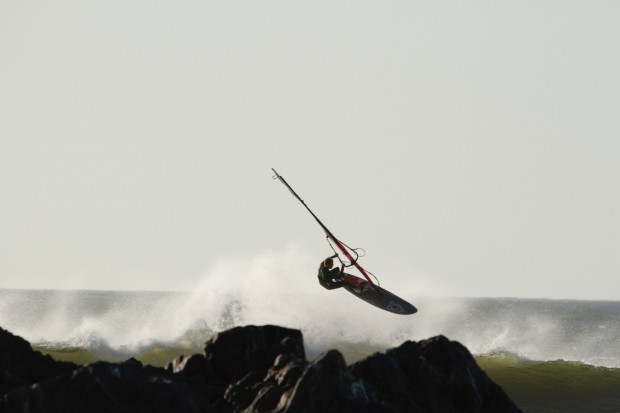
5. Surviving the ‘impact zone’

The main thing to do is to push your mast low as the sets roll over you, when you do this you give your gear the best chance of survival. Try to hold on to it and you may even make it through the set and be able to sail away, if not then always try to get to your gear as fast as possible. Don’t panic as you’ll need to hold your breath as the waves pass over. Just take it wave by wave when getting rolled around, it only lasts a short while, so just embrace the power like a mother nature massage.
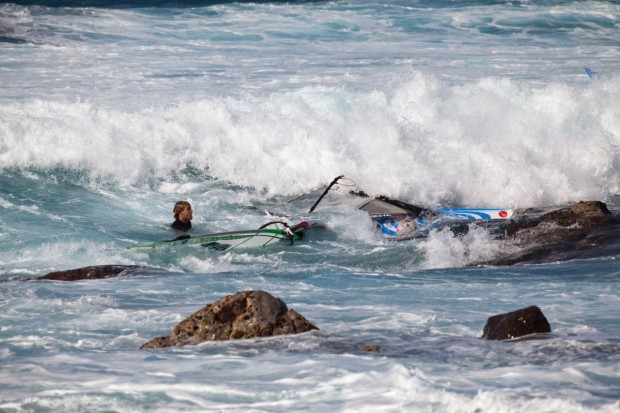
If you do end up in the unlucky predicament of being washed into rocks try to push your kit up high on the white-water to wash it up as far as you can then leave it alone to wash up its self. Then think about yourself as you get closer, protect your head by trying to float on the surface with your feet facing towards the rocks. Keep on your back and then when you feel you are close find something to grab hold of before you get washed back out. Then clamber up the rocks as fast as possible before the white-water comes back in. If you are lucky you can gather your gear and get back out and jump right back on that horse.
Lastly, most of all be sure to look out for people in trouble, you must always help people in need as you might be that person next time.





